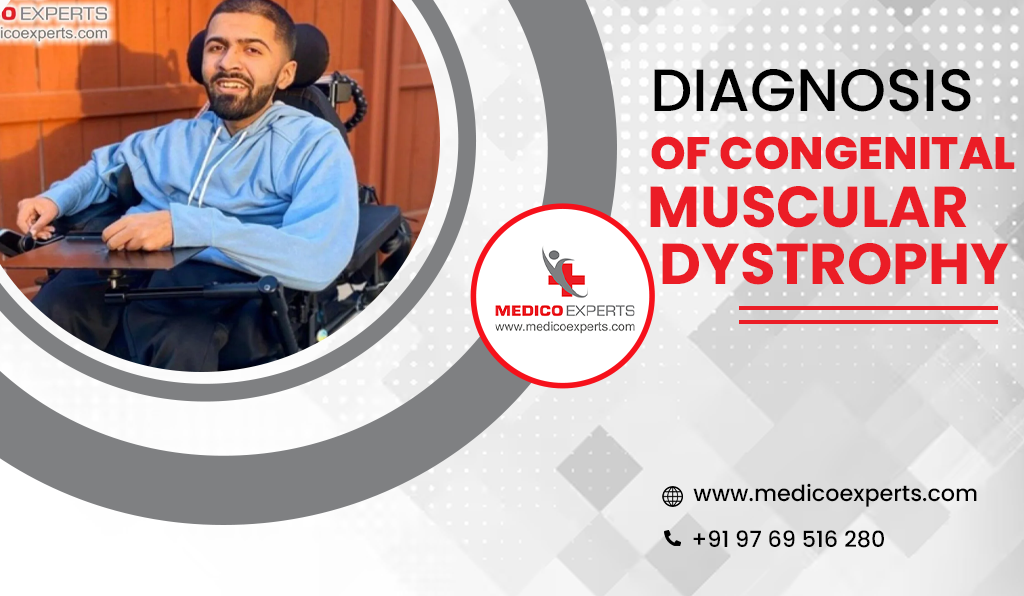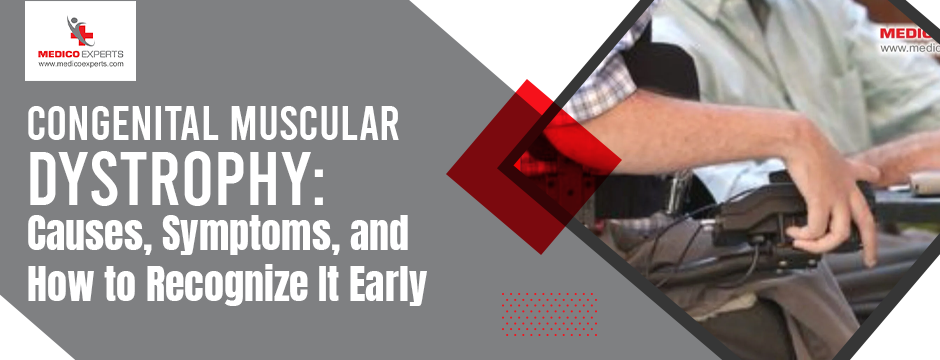Are you worried about your child’s weak muscles or delayed motor skills?
We know how painful it is to see your little one struggle with movements that are supposed to come easily. That’s why knowing about Congenital Muscular Dystrophy (CMD) is important. It is a rare genetic condition where muscles are weakened right from birth or early infancy.
CMD doesn’t only impact muscular strength—it also has an impact on brain activity, eyesight, and ability to breathe. Although it’s a chronic disorder, early identification, and supportive measures can improve life quality and impede its advance.
In this article, we discuss the causes and symptoms of CMD, as well as its diagnosis, so that you better grasp the condition and take the impactful options for the care of your loved one.
A Brief Discussion of Congenital Muscular Dystrophy
CMD (Congenital Muscular Dystrophy) is an inherited muscle disease that is present at birth or can occur in early infancy. It can cause both progressive muscle weakness and muscle loss. CMD is something different than the other muscular dystrophy as in the other cases the symptoms can occur in later childhood as well.
In a recent survey of eleven cases, researchers found a common protein in every patient which is called α-dystroglycan. The process of the modification of this protein sometimes goes wrong and it can lead to muscle weakness and muscle loss too.
The Causes of CMD
The most natural and clear cause of CMD is the genetic mutation. This mutation can affect the essential proteins that help structure the muscles and disrupt the process, causing the muscles to weaken.
Now let’s check the causes of these disorders.
Alpha-dystroglycans’ defective glycosylation is a major cause of genetic muscle disorders. These conditions vary in severity, from early and severe cases like WWS(Walker-Warburg Syndrome), MEB(Muscle-Eye-Brain disease), and FCMD (Fukuyama Congenital Muscular Dystrophy) to later and milder muscle damage. In some cases, they may also affect other organs.
Because of the wide range of symptoms, researchers now consider these illnesses part of a broad spectrum of related diseases.
Symptoms of Congenital Muscular Dystrophy
The symptoms of CMD depends on the particular genetic mutation, but the most frequent signs are:
- Hypotonia (Low Muscle Tone)
Newborns with CMD tend to have weak muscle tone and will seem “floppy.”
They will have difficulty lifting their head or keeping posture.
- Delayed Motor Milestones
Infants with CMD are delayed in reaching physical milestones like rolling over, sitting, or walking.
Some children might never learn how to walk unaided.
- Muscle Weakness
Weakness often involves the trunk, leg, and arm muscles.
This over time can contribute to problems moving, balancing, and coordinating motion.
- Joint Contractures
Stiffness and tightness of joints, especially at the ankles, hips, knees, and elbows, are common.
This may restrict the degree of motion and make walking harder.
- Respiratory Problems
CMD can cause the breathing problems. Caregivers should always be aware of the early signs of breathing breathing problems in this case.
Certain children may need ventilation assistance, particularly when they sleep.
- Eye and Brain Involvement
Fukuyama CMD and other types of CMD can lead to eye defects and vision impairments.
Seizures or delayed development can occur in some children due to involvement of the brain.
- Learning and Intellectual Disabilities
Although not ubiquitous, certain types of CMD are linked with learning difficulty or intellectual disability.

Diagnosis of Congenital Muscular Dystrophy
Diagnosis and detection of CMD revolves around three main aspects like clinical evaluation, laboratory tests, and genetic analysis. But over all of these, the early diagnosis is the most important thing in this case.
1. Clinical Assessment
Physicians begin by evaluating the child’s:
- Muscle tone and strength.
- Motor function and coordination.
- General physical and neurological development.
2. Blood Tests
A blood test can indicate high levels of creatine kinase (CK), an enzyme that seeps into the blood when muscle tissue is injured.
High CK levels indicate muscle disease but are not unique to CMD.
3. Muscle Biopsy
In this test, a tiny muscle tissue sample is taken out and viewed under a microscope.
The biopsy is used to identify changes in the structure of muscle fibers and to verify muscle degeneration.
4. Genetic Testing
Genetic testing is used to verify the diagnosis and determine the particular gene mutations responsible for CMD.
This data helps forecast the progression of the disease as well as the suitable treatments.
5. Electromyography (EMG)
EMG quantifies electrical activity in nerves and muscles.
It assists in identifying abnormalities in muscle function and is capable of differentiating between muscle or nerve pathology.
Final Thought
Congenital Muscular Dystrophy (CMD) is a rare but challenging condition that results from mutations in genes that make the muscles weak from birth or infancy. Although there is no treatment, early detection and proper care can go a long way in improving the quality of life for individuals with this condition. Understanding the causes, symptoms, and diagnosis process can help families and healthcare professionals work together to provide the best care and support.
If you or your loved one is suffering from Congenital Muscular Dystrophy, know that you’re not alone. At MedicoExperts, we have a team of experts who will assist you in navigating the treatment options available, including impactful therapies that can enhance muscle function and overall quality of life. Let us help you in making an informed choice and getting the best possible treatment for your condition.




